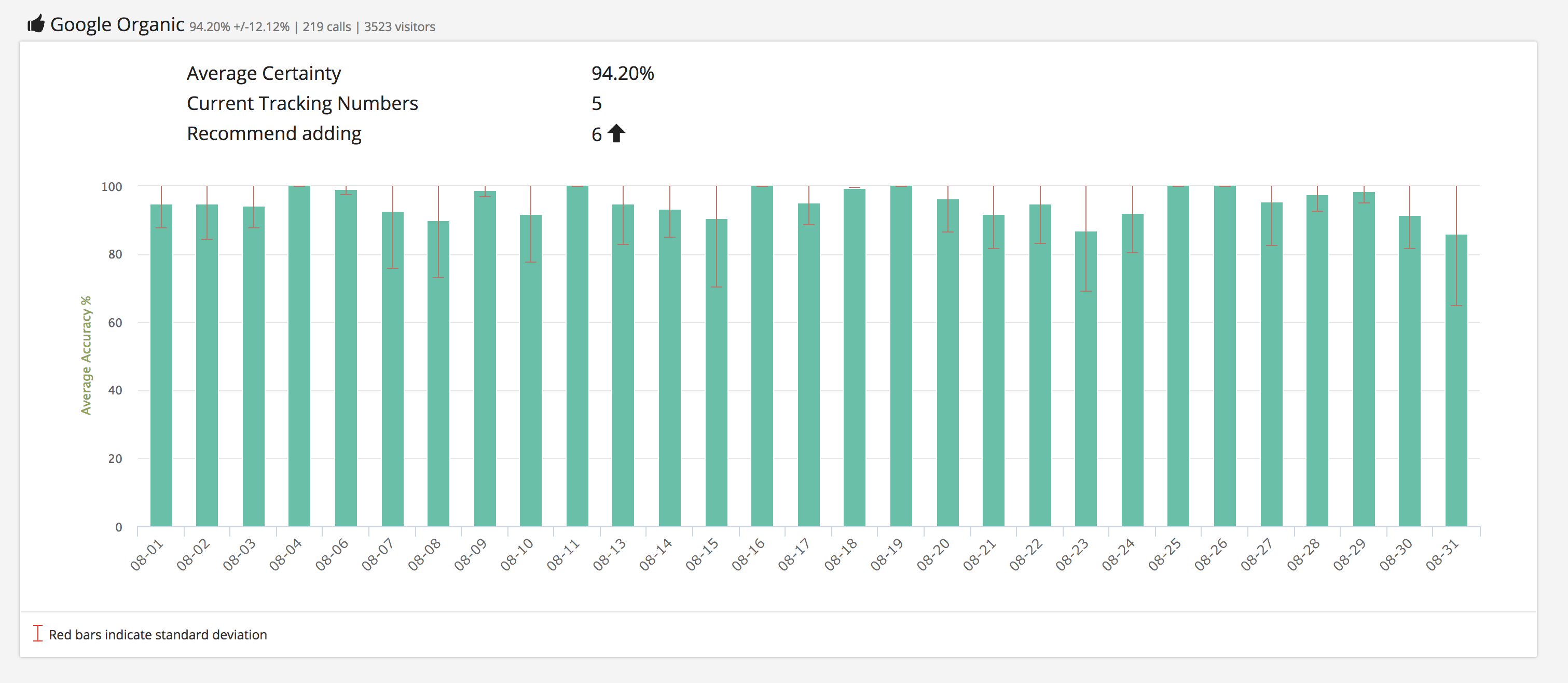Which are the most crucial reports for a digital marketer?
Let’s face it: marketers can’t really claim to be successful if they can’t prove their efforts are working. That’s why metrics—hard, verified data—are a marketer’s most valuable resource.
Marketing Metrics and Key Performance Indicators (KPIs) are measurable values used by marketing teams to demonstrate the effectiveness of campaigns across all marketing channels.
Metrics should be the foundation of any solid marketing strategy, which is why our platform, CallTrackingMetrics, works to provide multiple levels of reporting on the data we collect. From conversion tracking to keyword scoring, we can manage and analyze just about any information related to calls, texts, chats or form fills.
This is great for a savvy agency who knows they should build their campaign strategy around data, but with so many reports, where does a marketer begin? We sat down with our Director of Marketing, Erika Rollins, to get a better idea of which reports are the most instrumental for her decision making process.

If you represented an agency that was new to our platform, which report would you initially focus on?
I would absolutely start with ROI reporting to determine which channels are working, and which are not. Even the most successful marketers face budget and staffing challenges, and knowing where your investment pays off can really help conserve resources, while positively impacting your bottom line.
For example, let’s say you’re spending 30% of your advertising budget on Facebook and Instagram, 50% on Google Ads, and 20% on a series of posters in major subway stations. When you measure the value of the inbound leads generated by those campaigns—via measuring the conversion amounts of your tracked calls, texts, and form fills—you realize that the subway station posters are generating 40% of your calls, 70% of which convert to sales. With that information, you could confidently allocate more of your budget to expanding the subway ad campaign, and reduce the amounts spent on less successful channels.
Our ROI reports automatically populate with tons of data, displaying important statistics for each channel such as conversion rate, cost per call, revenue, and ROI. With access to current and detailed information, the days of “this just feels right” are long gone for marketers. With ROI reporting, you won’t just know which channels are successful; you’ll be able to quantify exactly how successful they are. Imagine how much easier it would be to go into that dreaded conversation about budget, when you’re armed with hard data on how much your department is generating across all channels.
Let’s say you’re a little more seasoned in call tracking. As a marketer, what type of report would you focus on next?
Once you get the hang of call tracking, and have allocated phone numbers to your various marketing sources, it makes sense to start reviewing the Accuracy Reports. What’s great about this particular report is that it provides valuable insight into the level of accuracy in which CallTrackingMetrics can detect and match unique visits back to a specific marketing source. Additionally, this report makes prescriptive recommendations for how to increase those accuracy levels.
For example, if I wanted to know what the average certainty is that my organic traffic is being correctly mapped to those visitors, it would look something like this:

This report tells me that the system is 94% confident that any organic visits are being matched appropriately. The other key takeaway from this report (and my favorite part), is that CallTrackingMetrics uses this data to make predictive recommendations. Here, you can see that CTM recommends I add six tracking numbers to this campaign to increase my accuracy score.
Knowing exactly how many tracking numbers you need for your marketing activities is always a bit of trial and error, but in general, the more granular you want your reporting to be, the more tracking numbers you will need. You can view the accuracy data across each of your tracking sources, making it quick and easy to monitor active campaigns, and make adjustments on the fly.
As an Inbound marketer, having complete visibility into the success of my marketing campaigns is critical, so the more granular I can get with my data, the better. With reporting on ROI and accuracy, my team can spend less energy trying to determine resource allocation. We confidently evaluate which direction to take, what needs improvement, and finally make decisions based on real data.